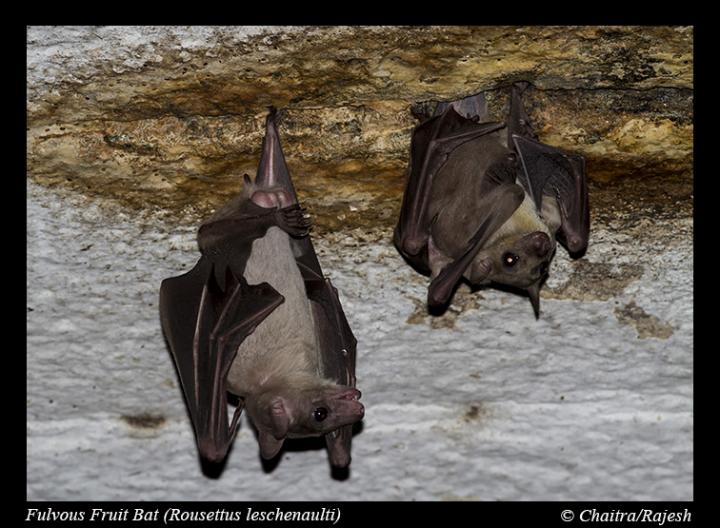New genus of filovirus found in fruit bats may be capable of infecting other species

Credit: Rajesh Puttaswamaiah, Bat Conservation India Trust
Researchers from Singapore’s Duke-NUS Medical School, in
collaboration with scientists in China, have identified and characterised a new genus of filovirus
from a Rousettus bat in China. Their findings were published in the journal Nature Microbiology.
Bat-borne viruses around the world pose a threat to human and animal health. Filoviruses,
especially Ebola virus and Marburg virus, are notoriously pathogenic and capable of causing
severe and often fatal fever diseases in humans by affecting many organs and damaging blood
vessels.
“Studying the genetic diversity and geographic distribution of bat-borne filoviruses is very
important for risk assessment and outbreak prevention as this type of infectious disease can
affect the general public without warning with devastating consequences,” said Professor Wang
Lin-Fa, Director of the Emerging Infectious Diseases Signature Research Programme at Duke-
NUS Medical School, Singapore, and a senior author of the study.
The researchers discovered the new virus while analysing the diversity of filoviruses in Rousettus
bats. They named it the Mengla virus because it was discovered in Megla County, Yunnan
Province, China. They detected the virus from a bat sample and conducted sequencing and
functional characterization studies.
The results showed that the Menga virus represents a new genus named Dianlovirus within the
filovirus group. The Mengla virus is genetically distinct, sharing just 32 percent to 54 percent of its genetic
sequence with other known filoviruses. It is found in different geographic locations compared to
other filoviruses. This new genus, which could include more than one species, sits in between
Ebola virus and Marburg virus on the evolutionary tree.
The researchers tested the Mengla virus in cell lines from various animal species and found that,
like other filoviruses, it poses a potential risk of interspecies transmission.
The results confirmed that the Mengla virus is evolutionarily closely related to Ebola virus and
Marburg virus and shares several important functional similarities with them. For example, the
genome organisation of the Mengla virus is consistent with other filoviruses, coding for seven
genes. The Mengla virus also uses the same molecular receptor, a protein called NPC1, as
Ebola virus and Marburg virus to gain entry into cells and cause infection.
“The early identification of the filovirus from Rousettus bats by Prof Wang and researchers in
China is one of the many strong research collaborations the Emerging Infectious Diseases (EID)
Programme at Duke-NUS engages in,” noted Professor Patrick Casey, Senior Vice Dean of
Research, Duke-NUS Medical School. “With globalisation, it is important to identify and assess
the risk of potential infectious disease outbreaks and, from it, develop effective controls
strategies and treatments.”
At present, the virus has only been identified in Rousettus bats in China. Further tests will be
conducted to assess the risk of the virus spreading to other species.
###
Reference: Yang XL, Tan CW, Anderson DE, Jiang RD, Li B, Zhang W, Zhu Y, Lim XF, Zhou P, Liu
XL, Guan W, Zhang L, Li SY, Zhang YZ, Wang LF and Shi ZL (2018). Characterization of a filovirus
(Mengla virus) from Rousettus bats in China. Nature Microbiology. DOI: 10.1038/s41564-018-0328-y
Media Contact
Federico “Rick” Graciano
[email protected]
65-660-13272
Original Source
https:/
Related Journal Article
http://dx.




